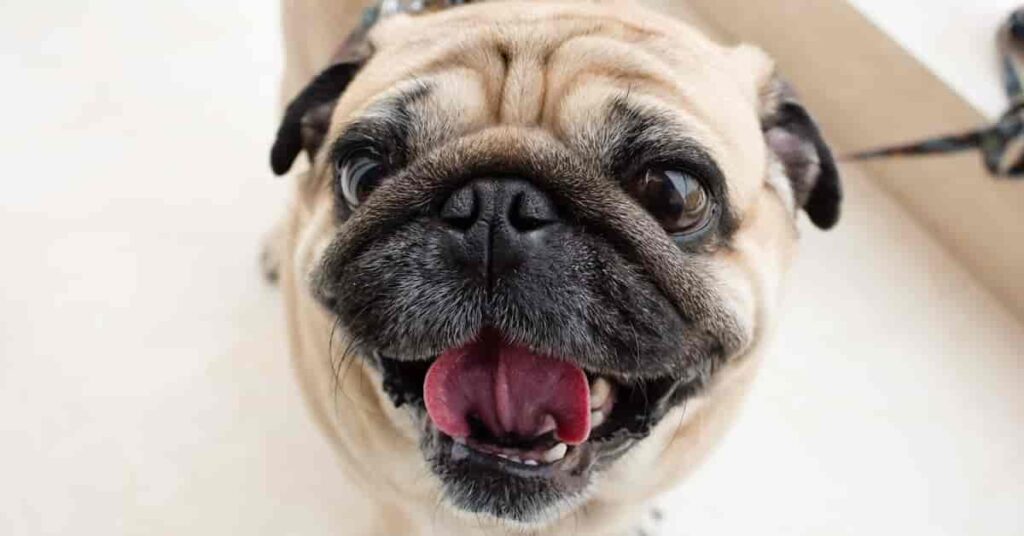Pugs are small dogs with big hearts and even bigger personalities. This breed has been loved by people for centuries, originally coming from China and later becoming popular in Europe. Pugs were even favored by royal families because of their charming looks and affectionate behavior.
Facts & Information
| Category | Details |
|---|---|
| Breed | Pug |
| Country of Origin | China |
| Fur Color | Fawn, Black |
| Height (inches) | 10-14 |
| Color of Eyes | Brown |
| Longevity (Years) | 12-15 |
| Size | Small |
| Type | Toy |
| Character Traits | Loyal, playful, affectionate, social, charming |
| Common Health Problems | Breathing problems, eye problems, hip dysplasia |
| Congenital Ailments | ‘Dry eye’ |
| Score for Kids | Not explicitly mentioned in either dataset |
| Popularity Ranking | 26 |
| Lifetime Cost | $18,527 |
| Intelligence Rank | 57 |
| Intelligence Percentage | 29% |
| Purchase Price | $469 |
| Food Costs Per Year | $405 |
| Grooming Frequency | Once a week |
Physical Characteristics
Pugs are a small breed, typically weighing between 14 and 18 pounds. They stand about 10 to 12 inches tall, making them a compact and easy-to-handle pet. Despite their small size, they have a strong and muscular body. Their short, smooth fur is soft to the touch and comes in a few different colors. The most common pug colors are fawn (a light brown shade) and black. Some pugs may also be apricot or silver fawn, but these colors are less common.
One of the most recognizable features of a pug is its wrinkled face and big, round eyes. Their short nose and flat face give them a unique look, but this also means they can sometimes have breathing problems.
Sponsored Ads
Temperament and Personality
Pugs are known for being loyal, playful, affectionate, social, and charming . They thrive on human interaction and enjoy being the center of attention. Their friendly demeanor makes them excellent family pets, though their suitability for children is rated as high (1 out of 3) due to their gentle and patient nature.
Despite their small size, Pugs have a big personality and are often described as “clowns” because of their goofy antics. However, they can be stubborn at times, which may require patience during training.
Sponsored Ads
Health Considerations
Pugs are prone to several health issues, primarily due to their flat faces and compact bodies:
- Breathing problems : A common issue in brachycephalic breeds like the Pug.
- Eye problems : Including ‘dry eye’ and other ocular conditions.
- Obesity : Pugs love to eat and are prone to weight gain if not given proper exercise.
- Skin allergies : Their wrinkles can trap moisture, leading to skin irritation if not cleaned regularly.
Their susceptibility to 1 genetic ailment highlights the importance of regular vet check-ups. Proper care can help extend their average lifespan of 11 years.
Sponsored Ads
Exercise and Activity Needs
Pugs are energetic but not overly demanding when it comes to exercise. They need about 30 minutes to 1 hour of activity daily, whether through walks, playtime, or indoor games. Activities like fetch or short hikes are ideal for keeping them physically and mentally stimulated. Without sufficient activity, they may become overweight, which exacerbates their breathing problems.
Living with a Pug
Pugs adapt well to various living situations, including apartments, as they don’t require a lot of space. However, their sensitivity to extreme temperatures means they should be kept indoors during hot or cold weather. They are social animals and dislike being left alone for long periods, which can lead to separation anxiety. Early training and socialization are crucial to ensure they grow into well-rounded adults.
Sponsored Ads
Grooming is manageable but necessary. Weekly brushing helps maintain their coat, and their facial wrinkles should be cleaned regularly to prevent infections. Their nails should also be trimmed periodically to avoid overgrowth.
Cost of Ownership
The initial purchase price of a Pug typically ranges from $469. Over their lifetime, owning a Pug can cost approximately $18,527, including food, medical care, grooming, and other expenses. Annual food costs average around $405, while grooming needs are manageable with weekly brushing and occasional professional grooming.
Special Traits
One standout feature of Pugs is their charming and affectionate nature. They are highly social and form strong bonds with their owners, often following them around the house. Their intelligence, combined with their playful and curious nature, makes them engaging companions.
Ranked as the 26th most popular breed, Pugs consistently top the charts due to their adaptability, trainability, and affectionate personalities. However, they rank 57th in intelligence among all dog breeds, with only a 29% intelligence percentage, meaning they may take longer to learn commands compared to other breeds.
Suitability for Families
Pugs are rated 1 out of 3 for suitability for children, indicating high suitability. Their playful and patient nature makes them excellent companions for families with kids. However, their sensitivity to rough handling means supervision is important to ensure safe interactions.

